This blog post may be titled “What is social commerce?,” but maybe it should actually be called “Do you want to make some money?”
Social commerce is a $89.4 billion market right now. It’s projected to grow to $604.5 billion in the next seven years.
If you’re a business with products to sell, this info probably makes you feel like that dollar-sign-eyes-green-tongue emoji.
Curious about how you can get a chunk of that change? We’ve got you covered. Read on for social commerce 101.
Bonus: Download a free guide that teaches you how to turn Facebook traffic into sales in four simple steps using Hootsuite.
What is social commerce?
social commerce is the process of selling products directly on social media.
With social commerce, the entire shopping experience — from product discovery and research to the check out process — takes place right on a social media platform.
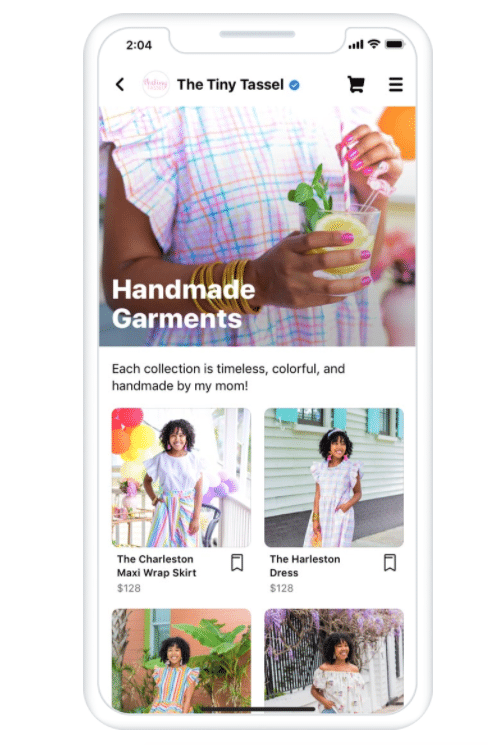
Source: Facebook
Currently, social apps that allow for social commerce include Instagram, Facebook, and Pinterest.
With social commerce, you might see a pair of sweet strawberry-print clogs on your Instagram feed, hit “shop now” and complete the purchase right there in the app.
Or, you could spot a well priced umbrella as you’re scrolling through your Facebook feed, click “Buy.” Once your purchase is complete, you can continue to enjoy your usual Facebook experience by creeping pics of your friend’s sister’s ex-boyfriend’s new baby, without missing a beat.
These are shopping opportunities (shopportunities!) right on the digital platforms that your audience uses most. And you should be taking advantage of them.
Social commerce vs. e-commerce
E-commerce refers to a shopping experience via a website or dedicated branded app. Social commerce, by definition, allowing the customer to make their purchase within their social media experience. Social commerce is not e-commerce.
Social commerce is also not social selling. Social selling refers to cultivating relationships on social media in order to build your sales prospect list. Read more about social selling here.
Why social commerce?
Not sure if setting up a social media shop is a good idea? Here are seven reasons why social commerce is worth a shot.
Social commerce makes shopping a social experience
Shopping on social media makes the experience much more interactive than a typical e-commerce spree.
Consumers can easily consult with their friends on purchases, show off those hip new hightops, comment on Aunt Jackie’s new “I Love My Niece” tee, review comments from other savvy shampoo shoppers, and interact directly with the kombucha brands they love.
For those who miss the social aspect of a day out at the mall, social commerce might just be the next best thing. (Though unfortunately without an Orange Julius pit stop.)
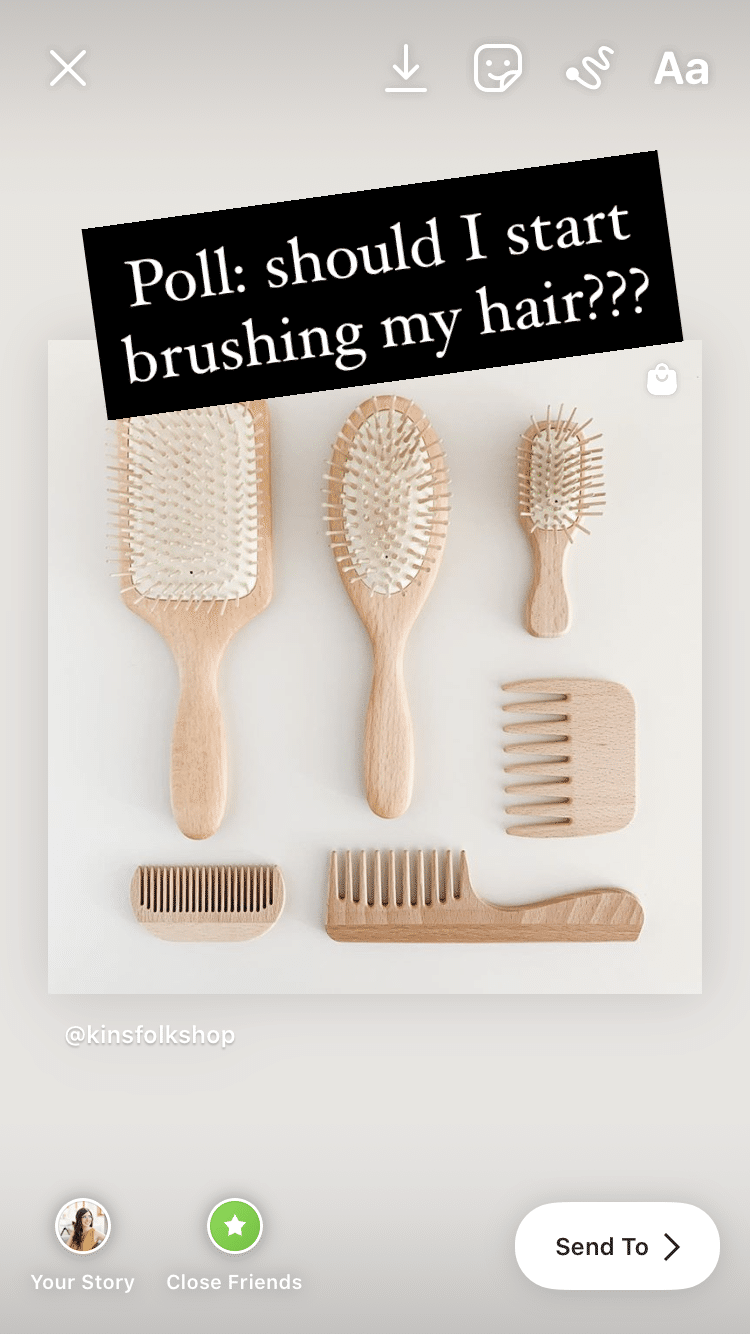
Source: Instagram
Social commerce removes friction
See it, click it, buy it. Social media shops remove friction from the consumer journey, making it easy to follow through from discovery to purchase. They’re there. The product’s there. Nowhere to go but the checkout.
Ultimately, every click of the mouse is an opportunity for a potential customer to change their mind. If they have to go from your ad, to your website, to add the product to a cart, to filling in their credit card info, that’s a lot of moments to lose their attention.
Take those unnecessary steps away and just bring the shopping right to social.
There’s some serious money to be made
Like Shakira’s hips, numbers don’t lie. Researchers are forecasting that e-sales will surpass $735 billion in the next three years.
If you want in on this action, it makes sense to bring your goods to the online spaces where your customers are already hanging out.
81% of shoppers research products on Instagram and Facebook, and shopping is a top priority for 48% of Pinterest users. Why not give ‘em what they’re looking for?
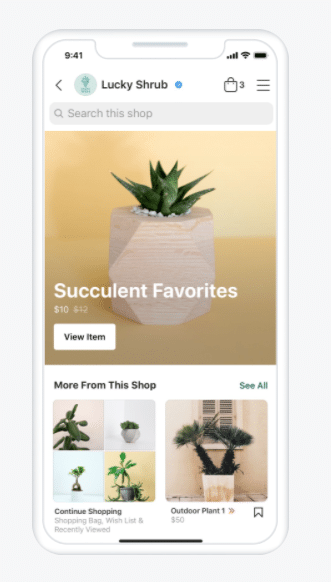
Source: Facebook
Social commerce offers an instant focus group
Not only does social commerce speed up the transaction process, it also offers an incredible way to collect feedback.
Your catalog of goods is out there in the world for consumers to review and discuss together. No crystal ball required: your customers can just tell you what they like or don’t like.
Why not get your audience to vote and weigh in on product development and inventory decisions while they’re there? (How are we feeling about my glow-in-the-dark wolf backpack design? Anyone? Hello?)
On social, you have clear data about exactly who your customers are, and the opportunity to chat with them after via comments or direct message, to provide personalized customer service.
It’s where Millennials and Gen Z like to shop
If your target demographic lies in the 18-to-34 age range, they’re already online and waiting to shop while they scroll.
48% of U.S. internet users this age made a purchase on social media in 2019. For those in that demographic who haven’t shopped on social media yet, 27% have expressed interested in giving it a go.
This is the modern mall. Time to open up shop!
Hyper-target your prime audience
With an incredible wealth of customer data available on social, you’ve got a prime opportunity to tweak and target your advertising.
Your horse-print bathrobes can be directly advertised to the flannel-loving equestrians out there. Adorable baby-sized sunglasses can be beamed right to the feeds of cool young dads.
Social commerce offers the chance to get specific, ready-to-buy products in front of the specific people who would love them, in a way that traditional e-commerce and marketing cannot.
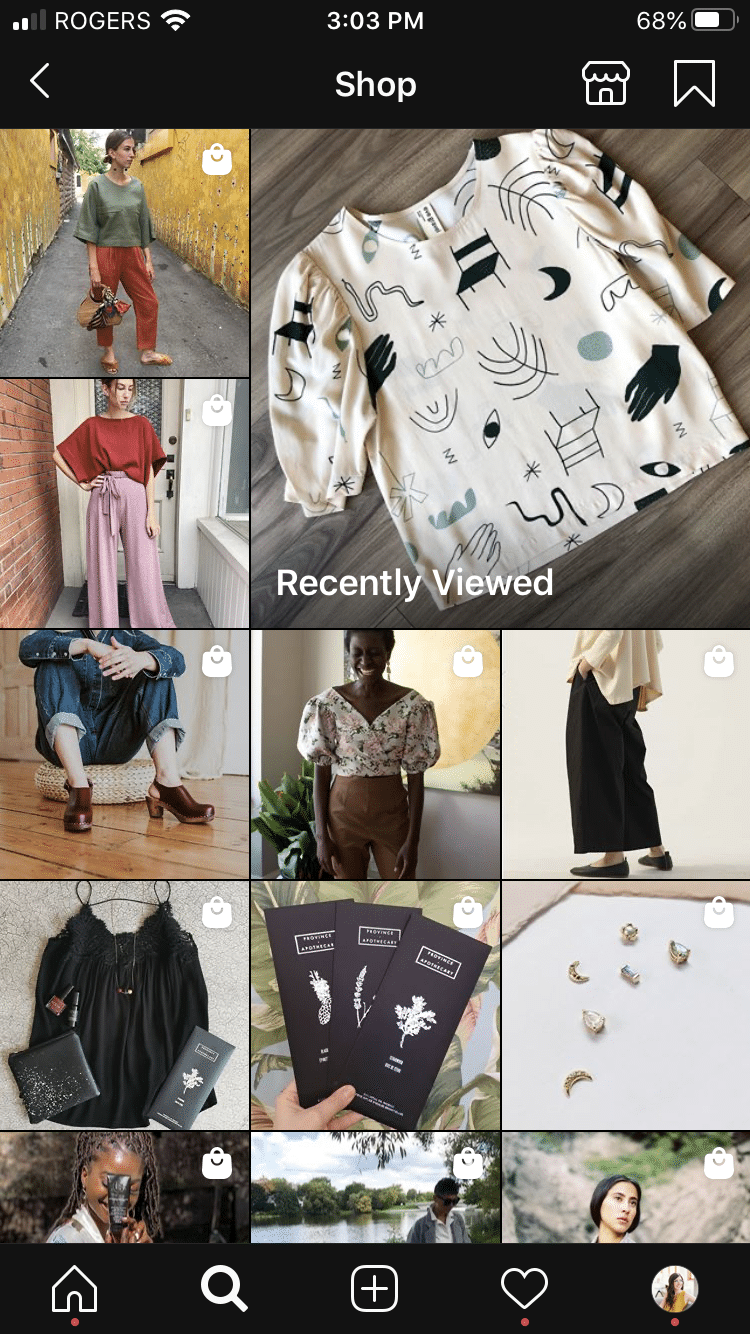
Source: Instagram
What are the best platforms for social commerce?
At the moment, only a few of the top social platforms offer social commerce. But as the interest (and revenue) grows, it’s likely we’ll see more of these social media brands integrating “shop now” options.
Here are the current social commerce platforms available.
Facebook Shops
You use your Facebook Business Page to share news, connect with fans, and show off your cute new logo. Why not use it to sell a few things while you’re there? Set up a Facebook Shop and you can do just that.
Facebook Shops are customizable. Choose which collections or goods to feature, and customize the fonts, images, and colors to suit your brand. Import an existing catalog of products from your website, or create one from scratch.

Source: Facebook
Your Facebook shop will be accessible from your Facebook Page, your Instagram profile, your Instagram Shopping ads, or shoppable stories and post.
When it’s conversion time, you’ve got the option for your customers to do an in-app checkout, or open up a direct Messenger chat with your business. You can also send them to your website.

Source: Facebook
One nice feature of Facebook shops: you can create a test shop to learn more. Here, you can add items, manage orders, and even test out the customer experience.
Learn how to set up your own Facebook Shops with our step-by-step guide.
Instagram Shops
60% of people discover new products on Instagram. Your products should be among them.
Instagram Shops allows users to buy products featured in your photos and videos from anywhere in the app.

Source: Facebook
Once catch: you do need to set up a Facebook Shop first (see above). Your Instagram Shop will be pulling data from your FB catalog.
Business profiles can create a customizable storefront page that acts as a curated collection of products for sale. Each product gets its own detail page, featuring pricing, media, and a detailed description.
Instagram’s Shopping Tags allow businesses to tag their products in their Stories or posts. U.S. brands also have the option to highlight products in post captions and bios.
For eligible U.S. businesses and creators, Checkout on Instagram lets customers complete a transaction using Facebook Pay. (Those without Checkout can use other tools that complete the purchase offsite.)
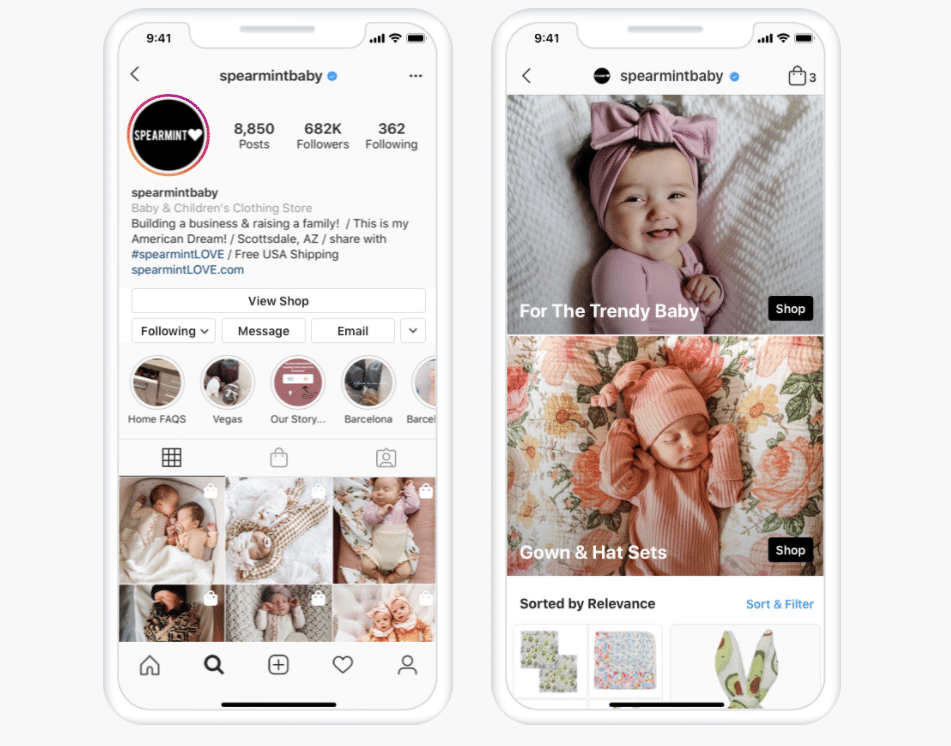
Source: Instagram
To get your Instagram Shop set up, you just need to live in an eligible region and have an Instagram Business account that’s connected to a Facebook page. You also need to comply with Instagram’s commerce policies and merchant agreement.
It’s also probably worth noting that Instagram Shops can only sell products not services.
Learn more about how to get your Instagram Shop up and running with Hootsuite’s how-to guide.
Okay, here’s some news you should pin right now: Pinterest does not strictly offer social commerce.
Bonus: Download a free guide that teaches you how to turn Facebook traffic into sales in four simple steps using Hootsuite.
Yes, for business accounts, Pinterest does offer the option to create “Product Pins” (formerly Buyable Pins), which are displayed in your brand’s Pinterest Shop.

Source: Pinterest
But it’s important to note that these are not available to purchase within the app. Clicking on a beautiful vase, and you’ll be sent off of Pinterest to an ecommerce site to complete the sale.
Is Pinterest still a helpful tool for getting your goods out into the world? Absolutely — especially given that 89% of Pinterest users are there for shopping inspiration.
For more on making the most of your Pinterest account, here are eight business strategies to try.
Snapchat
In July 2020, Snapchat announced a closed beta launch of Brand Profiles. One of the profiles’ features? A “Native Store” experience (powered by Shopify) that enables users to browse and purchase right from the app.
They debuted the feature with the help of five official approved influencer accounts — congrats to Kylie Jenner, Kim Kardashian, Shay Mitchell, Spencer Pratt, or Bhad Bhabie on this early access!

Source: Snapchat
A few other brands have been approved in the meantime, and it’s likely that this feature will expand to the rest of the non-Kardashian world eventually.
In the meantime, keep an eye on Kylie Cosmetics in the meantime to see how she’s making the most of the app’s “swipe up to shop” capabilities.
Or brush up on your snap cred with the help of our Snapchat for Business strategy guide.
6 tips and tricks for effective social commerce
Your shop is set up. You’re motivated and ready to sell. Here are key tips and tricks to make the most of this brave new digital shop-o-sphere.
Engage with your followers
To create a great social commerce experience, you’ve got to remember the “social” part.
You can’t just toss up your catalog and forget it. Answer questions, offer value and interesting content, be human and authentic, and so on. Set up a chatbot to help people move forward with their shopping journey.
The same best practices that you usually use for engaging your following all apply here.
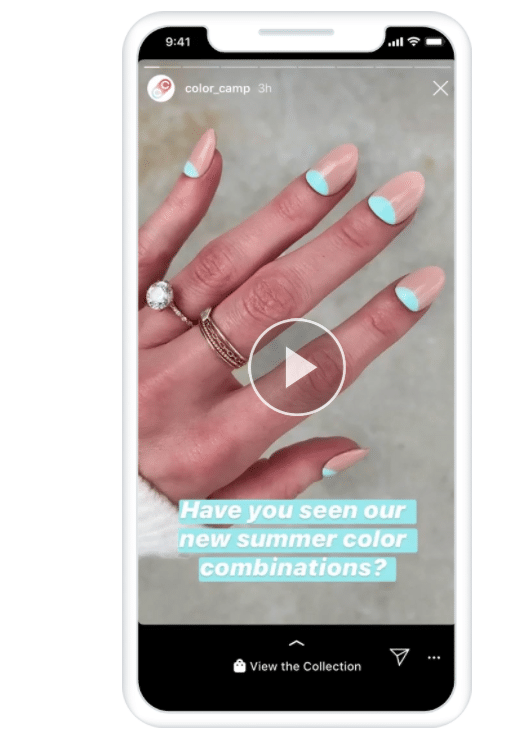
Source: Facebook
Listen strategically
You’ve got a front-row seat to your audience. Make the most of it.
Keep a close eye on comments and shares on your Shop, and respond or offer customer service when necessary.
Setting up social monitoring across all platforms can be a great way to catch feedback or industry news outside of your own bubble, too.
Check out our guide to social listening here.
Encourage reviews
93% of online shoppers say a review can make or break their decision. If you’ve got a product people are happy with, get them to help spread the word.
Whether it’s an automated follow-up email asking for a review after a product has been delivered, or incentives like a contest to encourage previous customers to weigh in and share their experience, collecting social proof is vital to building a positive reputation online.
Once you’ve got some positive reviews, share them on your social feeds in creative ways, whether that’s posting user-generated content, hosting a Live video with happy customers, or simply creating a carousel of positive comments. There are tons of ways to do this that won’t make you sound like you’re bragging.
Target your reach
Take advantage of the incredible data available to you on social to get your products or Shop in front of the right people.
Not sure who your audience is, exactly? Here’s how to find and target your dream customer.
Remove those moments of friction
The easier you make the purchase process, the more likely someone will be to follow through. So what moments of friction or hesitation can you remove?
Make sure the product description covers all those lingering details. Integrate autofill options into the purchase process. Maybe even set up a chatbot to answer customer FAQs.
Like a Grammy-winning Santana song: the smoother, the better.
Price your products to move
Social commerce offers a great opportunity for lots of different kinds of products — clothing, dog toys, risqué pottery — but luxury products typically aren’t successful here.
Because of the risk associated with buying something unseen, consumers are less likely to splurge on something with a larger price point.
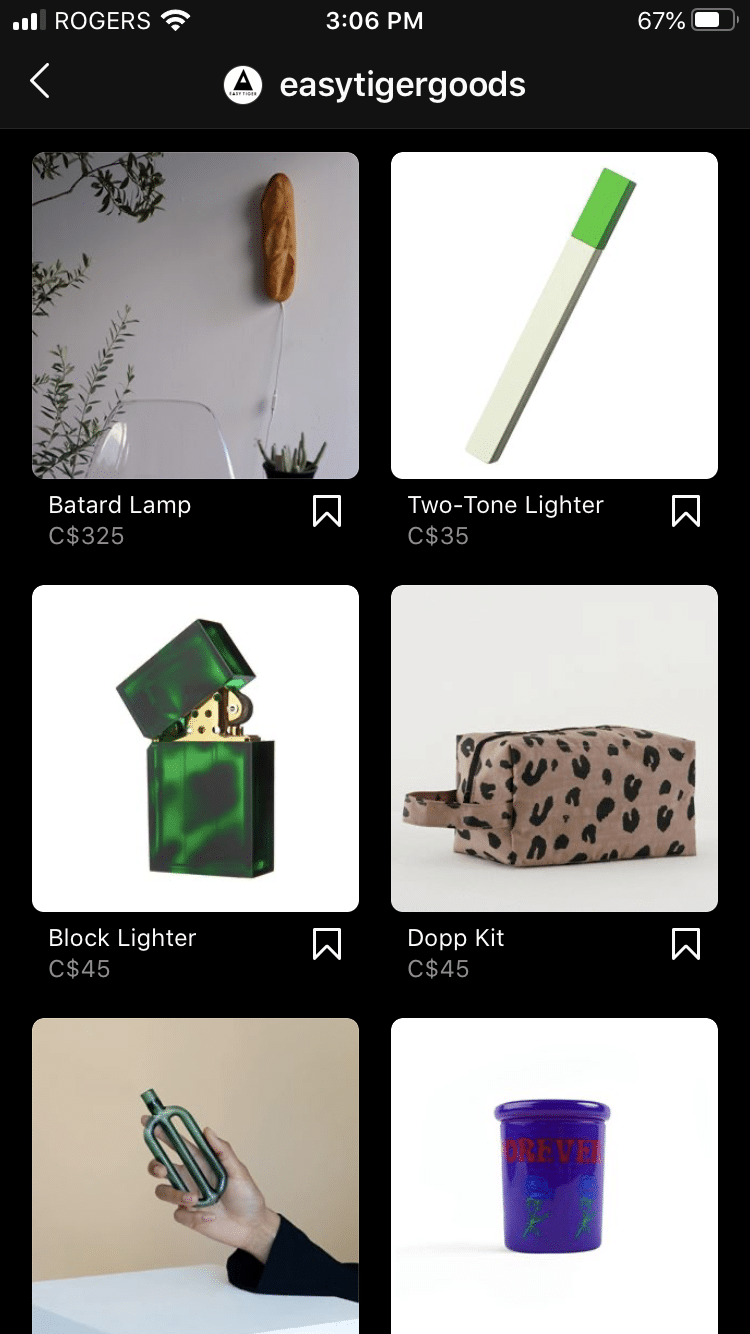
Source: Instagram
Shopify’s data show that an under $70 price tag is ideal: right in that “why the heck not” sweet spot for many social users.
Include products from your Shopify store in your social media posts with Hootsuite
Though not strictly falling under the definition of “social commerce”, Hootsuite users are able to post products from their Shopify store to their social networks via the Shopview app. It’s an easy way to use social media to enhance your customers’ online shopping experience.

Of course, social commerce is likely just one piece of your overall digital marketing puzzle.
To craft a robust strategy that engages, sells, and intrigues all across the wide plains of the internet, dive into our Social Media Advertising 101 guide. Build up your brand across all your platforms for your best chance at success, online or offline.
Save time and earn more customers with Hootsuite. From a single dashboard you can tag products from your Shopify store in posts, respond to customer requests, measure results, and more.
The post What is Social Commerce and Why Should Your Brand Care? appeared first on Social Media Marketing & Management Dashboard.


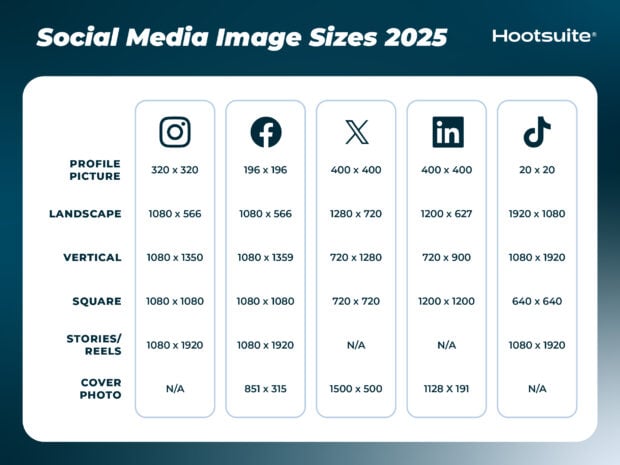
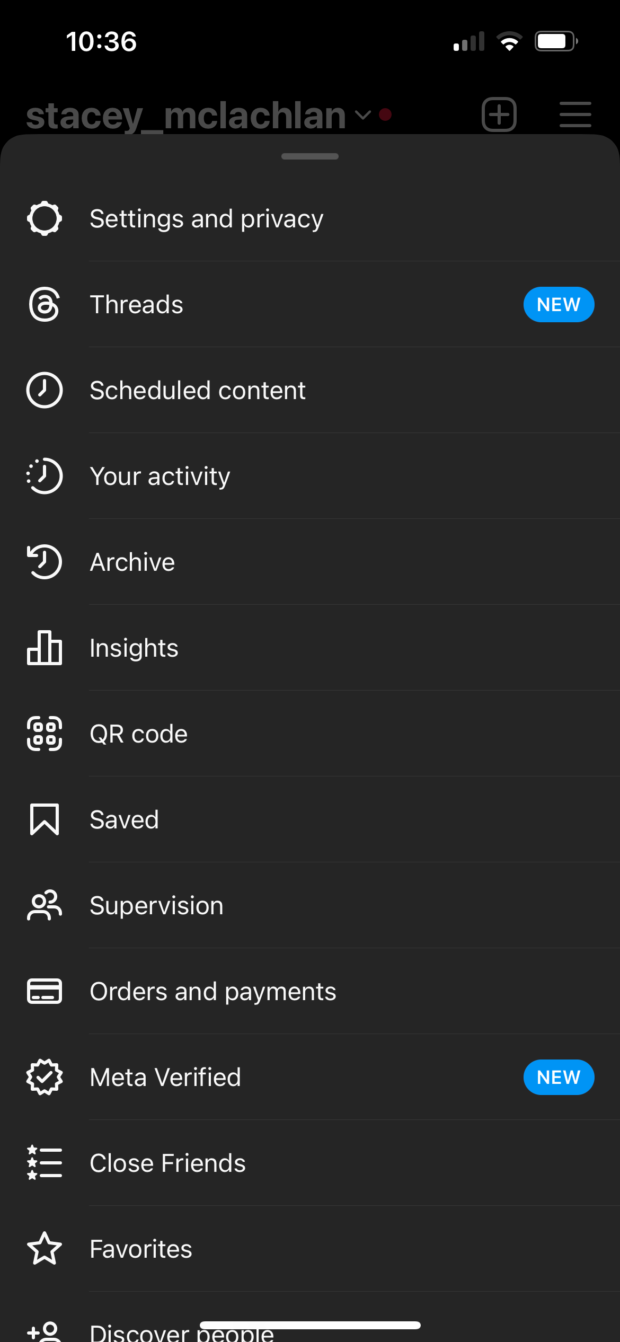

Recent Comments